How to Create a Modern Web Application Architecture?

Creating a modern web application architecture is crucial for businesses to remain competitive and meet the growing demands of users. A well-designed architecture ensures flexibility, scalability, maintainability, security, and high performance.
As an experienced web development company, Integrio will provide an overview of the architecture components, layers, types, and best practices. We will also share success stories from clients like 123Signup, Volo Innovations, and CareOregon.
What Is Web Application Architecture?
Web application architecture refers to the structural design and organization of the client-side and server-side components. It typically comprises multiple layers that work together to provide a complete solution to the end users.
While constructing a modern web application architecture, consider scalability, reliability, security, and maintainability.
How Do Modern Web Applications Work?
We prepared a simplified description of how web solutions typically work:
The user opens a web browser and enters the URL for the web application.
The browser sends an HTTP request to the server hosting the web application.
The server receives the request and uses the appropriate server-side component to process the request.
The server-side component retrieves data from a database and generates an appropriate response.
The response is sent back to the browser as an HTTP response.
The browser receives the response and uses the appropriate client-side components (such as HTML, CSS, and JavaScript) to render the response as a user interface.
The user interacts with the user interface, triggering additional HTTP requests to the server.
The server receives each request and processes it using the appropriate server-side component.
The server generates an appropriate response and sends it back to the browser as an HTTP response.
The browser receives the response and updates the user interface accordingly.
The process continues until the user completes their web application task.
Components of Web Application Architecture
The web application has two sides — front-end and back-end.
The front-end is part of a web application that's visible and accessible to the user and includes user interface (UI) elements, such as buttons, forms, and menus.
The back-end is part of a web application that runs on the server. It typically consists of the server and the database.
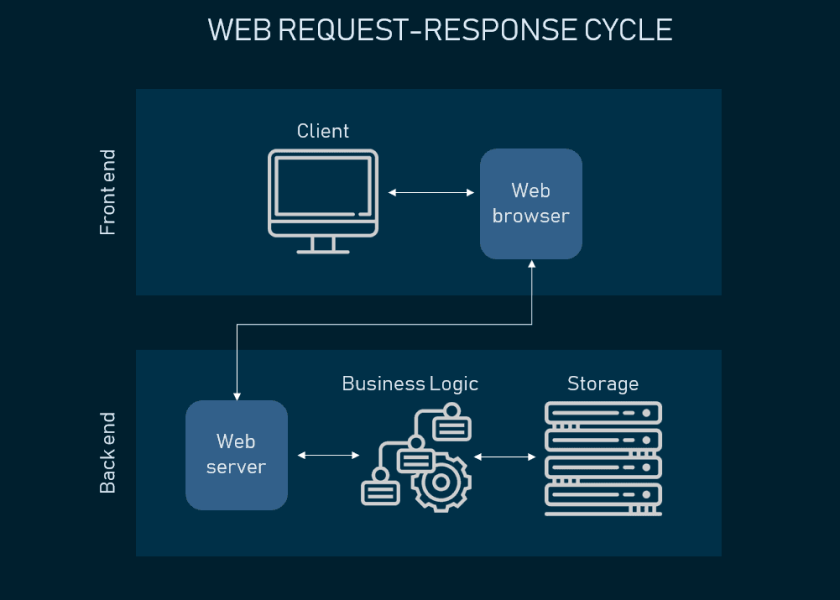
Let's discuss the components of modern web application architecture and their functions.
User Interface (UI)
The UI is the web application component that interacts with the user, displays the content, and receives input. It can be implemented using various technologies, such as:
HTML — to structure the web page's content
CSS — to style the page and make it visually appealing
JavaScript — to add interactivity and functionality to the UI
Good UI design involves understanding the user's needs and preferences, organizing the UI elements logically and intuitively, and making the application easy to use and navigate.
Web Server
The web server handles incoming client requests and sends back responses. It hosts the web application and serves HTML pages, images, and other static content. It also manages connections, sessions, and cookies and implements security mechanisms, such as SSL/TLS encryption, to protect against attacks.
Popular web servers: Apache, Nginx, Microsoft IIS, and Google Web Server.
Database Server
The database server stores and manages data for the web application. Its functions include creating, updating, deleting, and querying data, ensuring its integrity and security.
To improve the performance of web applications, database servers use caching and indexing techniques. They also implement backup and recovery mechanisms to protect against data loss and ensure its availability in the event of a failure.
Popular database servers: MySQL, Oracle, and MongoDB.
DNS
The Domain Name System (DNS) is a critical component of web application architecture. It translates human-readable domain names (such as www.example.com) into IP addresses (such as 192.0.2.1) that computers can understand.
Its main function is to provide a way for users to access web resources using easy-to-remember domain names while facilitating communication between web servers and clients.
Messaging Middleware
Messaging middleware enables communication between different software components or systems, allowing them to exchange messages and data with each other. It can handle a variety of communication patterns, such as point-to-point, publish-subscribe, and request-response.
Popular messaging middleware solutions: Apache Kafka, RabbitMQ, and ActiveMQ.
Load Balancer
A load balancer distributes incoming traffic across multiple servers to optimize resource utilization, maximize throughput, and minimize response time. As a result, it improves the performance and reliability of the web application.
Popular load balancers: HAProxy, NGINX, and F5.
Cache
The cache is an infrastructure component that stores frequently accessed data or resources in a fast-access memory or storage location. Its primary purpose is to improve performance and scalability.
Popular caching solutions: Redis, Memcached, and Varnish.
CDN
The Content Delivery Network (CDN) is a network of globally distributed servers that delivers content to users from the server closest to them. It improves the performance and availability of the web application by reducing latency and network congestion.
Popular CDNs: Cloudflare, Akamai, and Amazon CloudFront.
There are several models of web application components, including the client-server, peer-to-peer, and the hybrid model.
Web Application Architecture Diagram
This diagram will help you visualize the application architecture by combining everything we discussed:
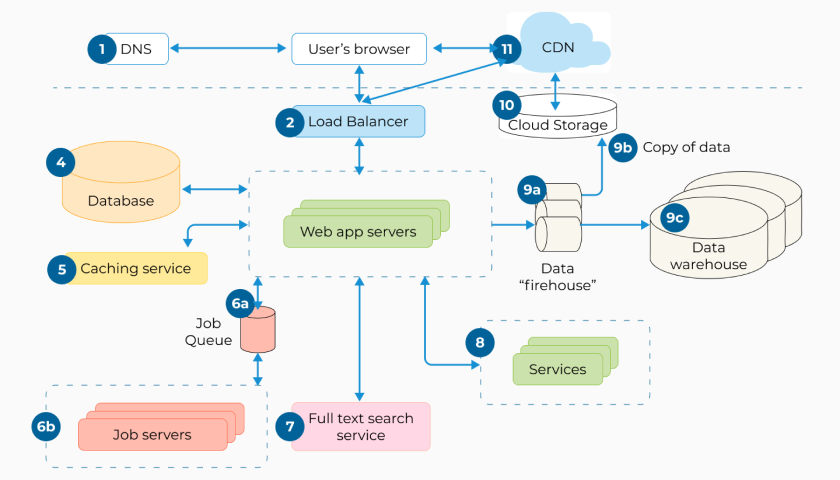
Layers of Web App Architecture

Here is a description of the four layers of a modern web app architecture:
Presentation Layer
The presentation layer manages the app user interface, dealing with HTML, CSS, and JavaScript. It also receives user input and sends it to the business layer for processing, interacting through APIs or interfaces. The presentation layer typically includes web components such as controllers, views, and templates.
Business Layer
The business (or application) layer handles the web application's business logic. It contains controllers, services, and models responsible for performing the necessary actions to fulfill user requests. The business layer interacts with the data access layer to retrieve or manipulate data as needed.
Data Access Layer
The data access (or persistence) layer translates application data into a format that can be stored and retrieved from a data store. It contains the components that interact with the database, such as data access objects (DAOs), object-relational mappers (ORMs), and stored procedures.
Database Layer
The database layer includes the database management system (DBMS) and the data stored in the database. This layer stores data in a structured format that can be easily queried and manipulated by the data access layer.
Here is an algorithmic representation of how the layers work together:
The user interacts with the presentation layer by providing input through the user interface.
The presentation layer receives the user input and sends it to the business layer.
The business layer processes the user input, performs the necessary actions, and retrieves or updates data through the data access layer.
The data access layer retrieves or updates data from the database layer and sends it back to the business layer.
The business layer processes the retrieved data and generates a response to the presentation layer.
The presentation layer receives the response from the business layer and updates the user interface accordingly.
The process repeats as the user provides further input or navigates through the application.
Types of Web Application Architecture
When it comes to designing and developing web applications, there are different types of architectures to choose from.
Frontend
Single-Page Applications (SPAs)
In SPAs, the web application loads only once and then dynamically updates the content as the user interacts. The data is loaded asynchronously through APIs, making it more responsive and reducing the server's load. This architecture is suitable for applications that require a lot of user interaction and real-time data updates.
Examples: Gmail, Trello, Spotify, and Twitter.
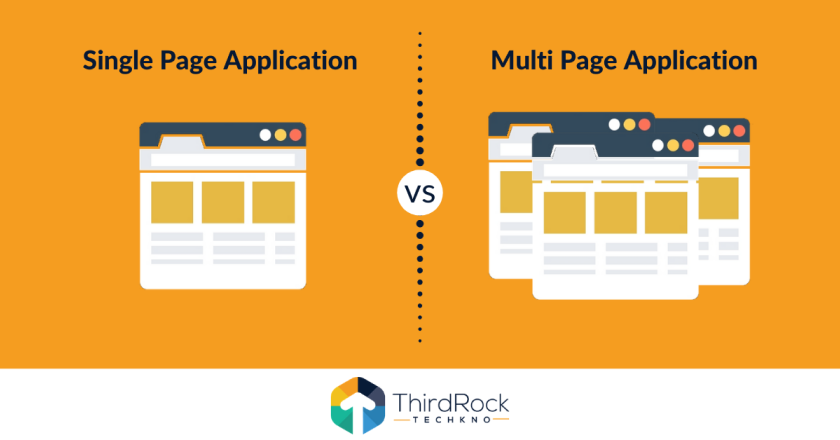
Server-Side Rendered Application (SSR)
In SSR, the server generates HTML pages for each request, and the client only receives the final result. This architecture is suitable for applications that require fast loading times and good SEO, but it can be slower than SPAs.
Examples: WordPress, Airbnb, Shopify.
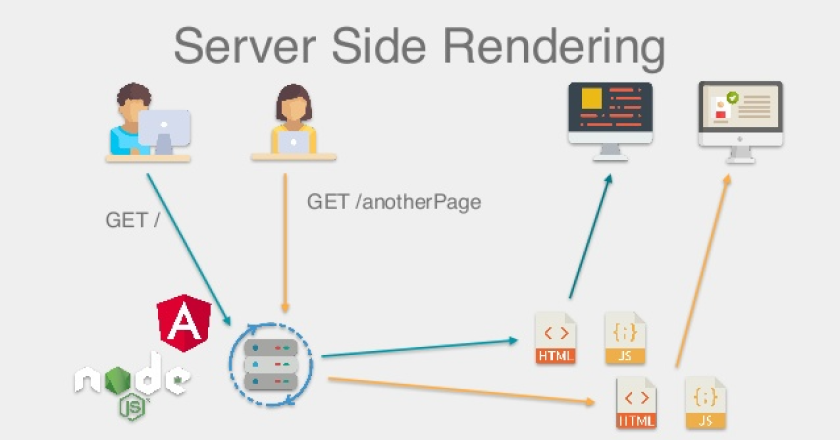
Progressive web application (PWA)
A PWA behaves like a native mobile application, with features like offline access, push notifications, and full-screen mode. This architecture is suitable for solutions that need to be accessible on mobile devices and have the same user experience as native applications.
Examples: Starbucks, Pinterest, Forbes, Uber, and Twitter Lite.

Backend
Microservices
In a microservices architecture, the backend is divided into small, independent services that communicate with each other through APIs. Each service is responsible for a specific function: authentication, payments, or messaging. This highly scalable architecture allows for more granular control over individual components but can be complex to manage.
Examples: Netflix, Amazon, Uber, and Airbnb.

Serverless Architecture
In this architecture, the backend is built using cloud-based solutions, such as AWS or Azure. Each function is responsible for tasks like registering users or sending email notifications. It is highly scalable and cost-effective but difficult to manage and debug.
Examples: Coca-Cola, Capital One, The New York Times, and Fender.
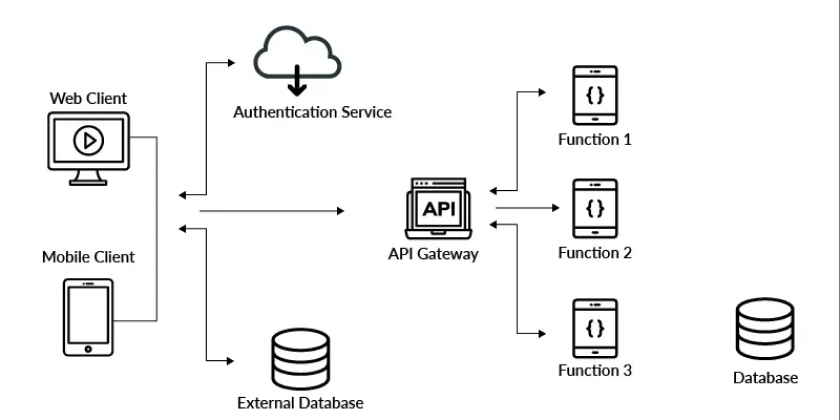
Precise Web Application Architecture Best Practices
Working on web app architecture, developers need to consider a range of factors:
Scalability — to handle increasing loads and scale horizontally or vertically
Modularity — to provide easy testing, modifications, and bug fixes
Security — to protect sensitive data and prevent unauthorized access
Performance — to guarantee a responsive and fast user experience
Availability — to ensure the application is available even during failures
Extensibility — to allow for future changes and updates
Standardization — to ensure consistency and ease of maintenance
Flexibility — to adapt to changing requirements and improvements over time
Documentation — to improve collaboration, reduce errors, and simplify maintenance
Why Integrio Is the Trusted Modern Web App Architecture Service Vendor
Integrio is a reliable modern web application architecture vendor with:
20 years of experience in developing web apps for startups, small and mid-sized companies, and enterprises
Expertise in various industries, including aviation, transportation, manufacturing, real estate, telecommunications, digital marketing, health, and fitness
Cutting-edge technologies, such as Artificial Intelligence (AI) and Machine Learning (ML)
Flexible cooperation and pricing models: project outsourcing (fixed price, time & material) and dedicated team (monthly retainer)
See the specific cases our company worked on:
Volo
For Volo Innovations, we developed software for managing gyms and fitness centers. Its functionality includes scheduling, invoicing, marketing activities, reporting, and more. The company was later acquired by Member Solutions, a subsidiary of Jonas Software, and the source code has successfully passed an independent audit for scalability and security.
CareOregon
US health insurance provider CareOregon conducted a member satisfaction survey. Our task was to create a program that could structure a huge amount of data and display it in the form of diagrams and tables. Such a platform had to be safe and reliable. As a result, the company increased its revenues and improved overall customer satisfaction and even can track its level in real time.
123Signup
Collaboration with 123Signup started with the source code recovery and modernization of the legacy components of their event and association management solution. We also added modules for membership, event planning, and donations, as well as reporting and analytics. It helped clients improve their experience and run events with fewer staff.
Conclusion
Modern web application architecture is essential for creating scalable, secure, and maintainable solutions. By following best practices and choosing the appropriate components, layers, and types of architecture, developers can create applications that meet clients' business needs and provide a seamless user experience.
Contact Integrio to learn how we can help you create an advanced web app with modern architecture.
FAQ
A modern web application architecture is a software design approach that leverages cloud computing and microservices to build scalable, flexible, and efficient web applications. It also includes infrastructure components like containerization, load balancing, and caching.
First, you need to understand the requirements of your application and select the appropriate technologies and infrastructure components to meet those needs. This involves careful planning, collaboration between development and operations teams, and a focus on scalability, security, and efficiency.
To evaluate modern web app architecture, you must consider scalability, security, performance, and complexity. It's important to analyze your specific requirements, such as the number of users, the complexity of your application, and your budget. Consulting with Integrio experts can also be helpful.
Contact us

